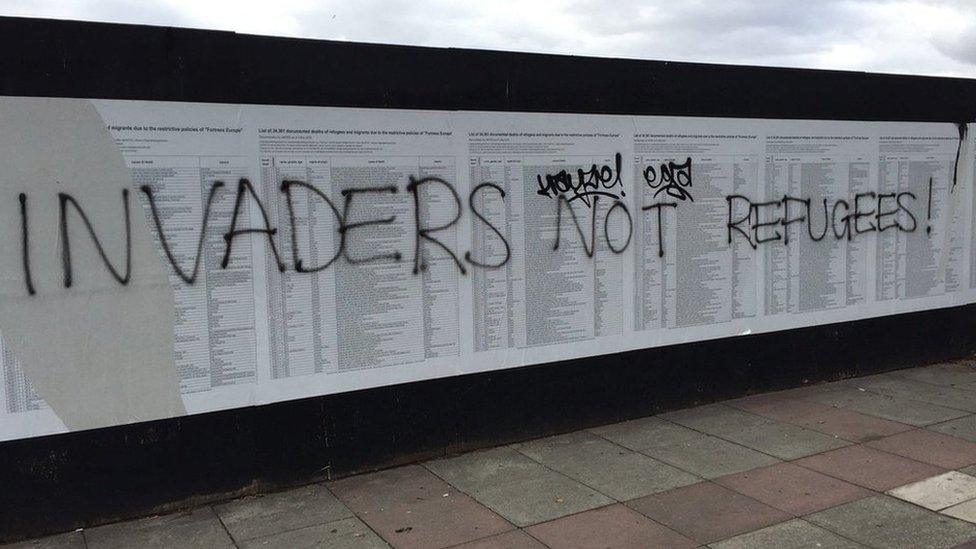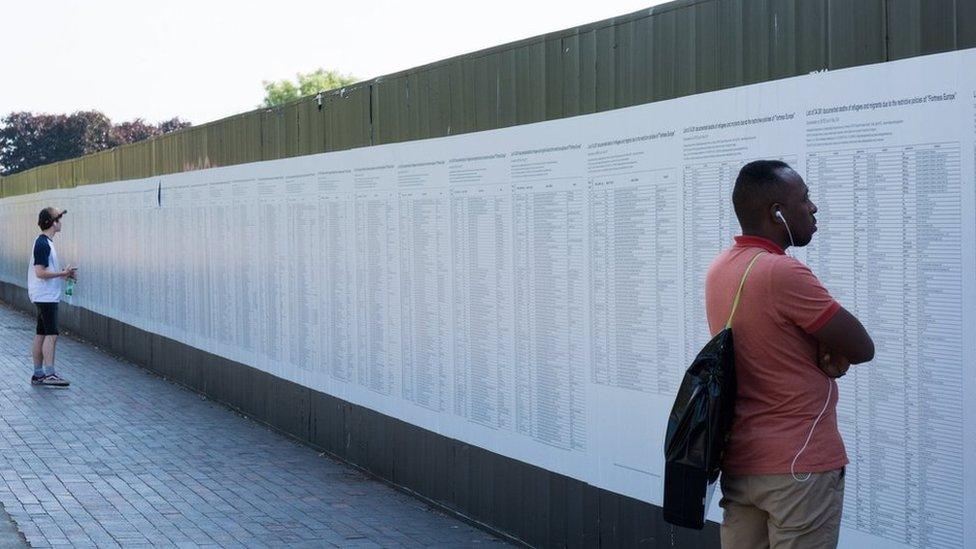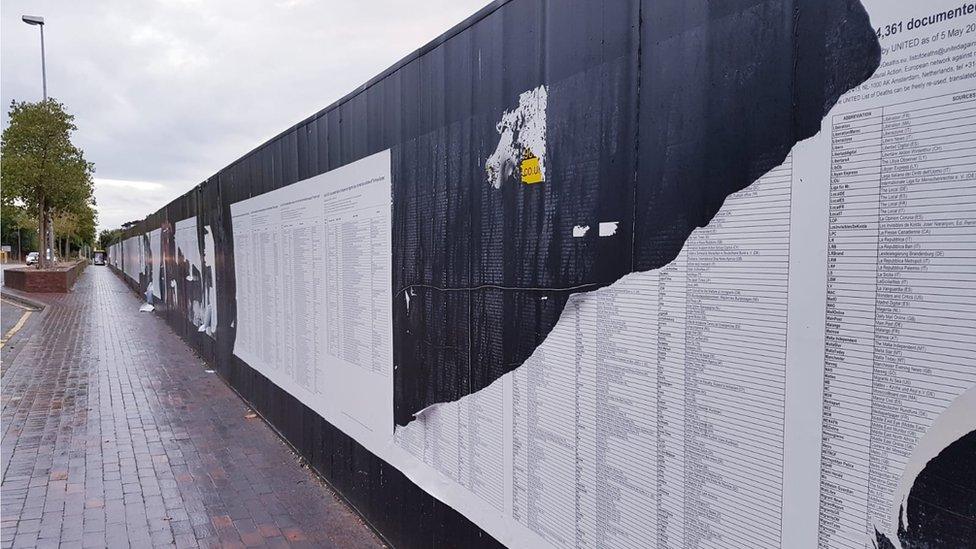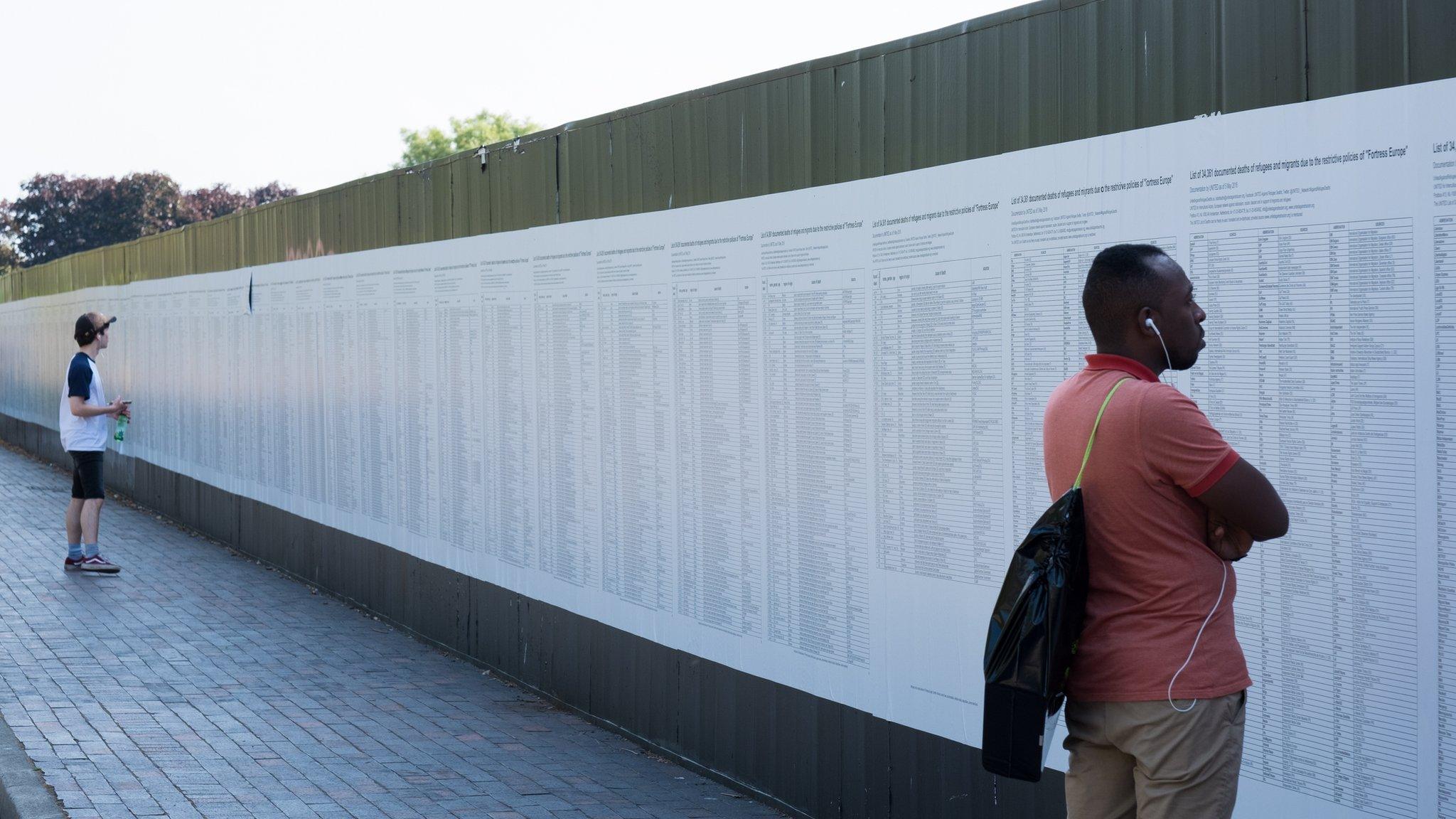'Invaders' daubed on Liverpool List refugee memorial
- Published

Liverpool's mayor tweeted an image of the damage
The mayor of Liverpool has said it is "despicable" that the word "invaders" has been written across a memorial to dead refugees and migrants.
It was daubed on The List, which displays the names of 34,361 asylum seekers, refugees and migrants who have died within or on the borders of Europe since 1993.
Joe Anderson said the offenders "had their brains invaded by hatred".
Merseyside Police said it had not received any reports of damage.
The installation on Great George Street is part of a festival of contemporary art running until October.
Liverpool Biennial, which commissioned the project, is yet to comment.
Allow X content?
This article contains content provided by X. We ask for your permission before anything is loaded, as they may be using cookies and other technologies. You may want to read X’s cookie policy, external and privacy policy, external before accepting. To view this content choose ‘accept and continue’.

Designed by artist Banu Cennetoğlu, the memorial has been torn down twice this summer.
In August, she issued a joint statement with Liverpool Biennial saying the work had been "repeatedly damaged, removed and targeted since it was installed" on 12 July.
They said The List has not been attacked in any of the other places it has been installed, such as Berlin, Istanbul, Basel and Athens.

The List in Liverpool, before it was torn down
The names of those who have died are compiled and updated each year by the anti-discrimination network United for Intercultural Action.
Liverpool Mayor Mr Anderson said: "To smear them and call them invaders quite frankly is despicable."
In a tweet,, external he added: "Those responsible for this defacement of a memorial to innocent dead people fleeing for their lives, have had their brains invaded by hatred.
"We will not be beaten by fascist thugs and we will pay for another memorial. I want volunteers to help me protect it."
Ms Cennetoğlu has translated versions of The List using public spaces such as billboards, transport networks and newspapers since 2007.

You may also be interested in:
- Published15 August 2018

- Published3 August 2018
